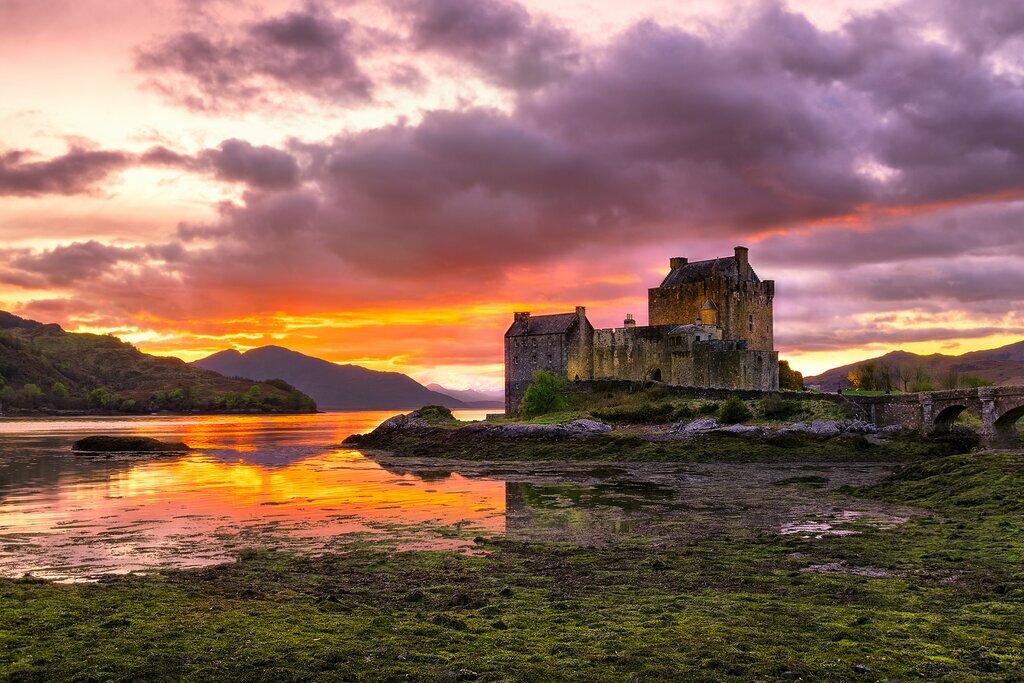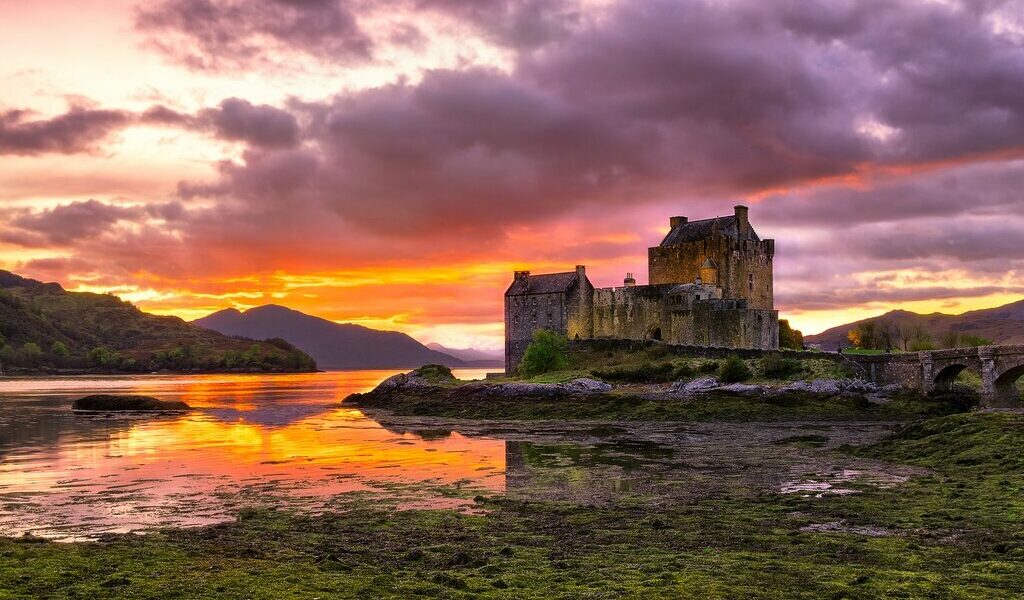
Get here now: March is the end of low season—a good time to snag travel deals and explore uncrowded attractions, from Edinburgh Castle to the Isle of Skye (combine both for the ultimate road trip). Daylight hours are also increasing as spring approaches for more time outdoors. Keep in mind that there may be an uptick in crowds and prices if Easter falls early.
Scotland in March: A Comprehensive Travel Guide
## Weather in Scotland during March
The grip of winter in Scotland begins to loosen ever so slightly as spring tentatively arrives in the latter half of March. This transition manifests as a gradual, albeit subtle, increase in temperatures, particularly noticeable in the Lowlands region. However, the mountainous terrain of the Highlands often retains its snow-covered majesty, creating a captivating contrast between the thawing lowlands and the still-wintery highlands.
It’s important to remember that Scotland’s weather is notoriously localized, with significant variations depending on your specific destination within the country. The west coast, for example, enjoys a slightly milder climate thanks to the warming influence of the Gulf Stream and the prevailing westerly winds. These winds carry temperate air and rain clouds from the North Atlantic, resulting in a region that is generally warmer, greener, and experiences higher rainfall than its eastern counterpart.
Despite these regional variations, average temperatures across major cities such as Edinburgh, Glasgow, Inverness, and Aberdeen tend to be relatively similar during March. Typically, you can expect daily high temperatures to reach around 48°F (9°C), while the lows hover just above freezing at approximately 36°F (2°C).
However, the true character of Scottish weather lies in its unpredictable nature. Visitors should be prepared for a daily medley of sunshine, cloud cover, and varying degrees of precipitation. To fully enjoy outdoor activities and exploration, it is essential to pack accordingly. Warm, waterproof layers are crucial, along with thick socks and sturdy, waterproof footwear to keep your feet dry and comfortable in the face of potential rain or damp conditions. A versatile wardrobe is key to navigating the ever-changing conditions that March in Scotland can present.
## Crowds and Costs in March
March marks the tail end of the low season in Scotland, just before the arrival of the spring shoulder season. This presents a unique opportunity for travelers seeking a more authentic and less crowded experience. It’s a fantastic time to immerse yourself in the country’s natural beauty, exploring popular attractions with fewer throngs of tourists and enjoying more peaceful drives through the scenic islands and countryside.
Consider opting for weekday flights, as these often offer more competitive prices compared to weekend travel. However, be aware that accommodation rates are likely to increase towards the end of March as the spring break season begins to draw in more visitors. Booking in advance, especially if your travel dates fall towards the end of the month, is highly recommended to secure the best deals and preferred lodging options.
Traveling in March allows you to experience a quieter, more intimate side of Scotland, providing a more authentic glimpse into the country’s culture and landscapes. Embrace the opportunity to connect with locals, explore off-the-beaten-path destinations, and savor the tranquility of the Scottish countryside.
## Where to Go in Scotland
Scotland, despite its relatively compact size, boasts a diverse and captivating landscape encompassing rugged coastlines, enchanting offshore islands, and stunning lochs and interiors. Many first-time visitors begin their Scottish adventure in the Lowlands, home to the country’s two largest cities: Glasgow and Edinburgh. Conveniently located less than an hour apart by train, these vibrant urban centers offer a wealth of cultural attractions, historical landmarks, and culinary experiences.
If it’s your first visit to Scotland, consider dedicating a few days to exploring either or both of these cities. Edinburgh, the nation’s capital, is often lauded for its undeniable charm, while Glasgow offers a more modern and dynamic urban experience. A shorter trip could easily be based in one city, with day trips planned to nearby gems such as St Andrews, renowned as Scotland’s oldest university; Cairngorms National Park, a haven for outdoor enthusiasts; and the legendary Loch Ness, home to the mythical Nessie.
For travelers with more time to spare, a self-guided road trip offers the freedom to explore Scotland’s diverse landscapes at your own pace. March is an ideal time for such an adventure, as the roads are less congested and the attractions are less crowded. The west coast, with its lush greenery and dramatic scenery, is particularly appealing during this time of year, thanks to the frequent rains that keep the landscape vibrant.
Oban, a charming fishing town, serves as an excellent base for exploring the Hebridean Islands. This picturesque town acts as a gateway to the isles of Iona, Mull, and Staffa, offering regular boat trips to these enchanting destinations. Each island boasts its unique character and breathtaking scenery, from the historic abbey of Iona to the dramatic basalt columns of Staffa.
Alternatively, a drive north will lead you to the Isle of Skye, a dramatically scenic island characterized by its rugged mountains, dramatic coastlines, and the colorful harbor town of Portree. The journey north is equally rewarding, as it takes you through the majestic Glencoe Valley, renowned for its unparalleled scenery and challenging hiking trails. This area is also home to Ben Nevis, the highest peak in the United Kingdom, offering breathtaking panoramic views for those who dare to conquer its summit.
## What to Do in Scotland
First-time visitors to Edinburgh should prioritize a visit to the Royal Mile, a historic thoroughfare that leads to the iconic Edinburgh Castle. Embark on a private tour of the castle to delve into the history of this ancient fortress, which dates back to the 2nd century. Another must-do activity is a brisk walk up to Arthur’s Seat, the highest point in the city. From this vantage point, you’ll be rewarded with stunning panoramic views of Edinburgh’s iconic churches and medieval buildings.
Glasgow, as Scotland’s largest city, offers a diverse range of attractions, including beautiful Art Nouveau architecture and world-class museums. The Kelvingrove Art Gallery and Museum, for example, houses one of Europe’s most impressive art collections. Don’t miss the opportunity to explore the medieval Glasgow Cathedral, the oldest cathedral on mainland Scotland, and discover the gentrifying neighborhoods that contribute to this fun-loving city’s vibrant atmosphere.
If you opt for a road trip through the Hebridean Islands, you’ll be spoiled for choice with gorgeous coastal roads, medieval castles, and a wealth of outdoor activities. Hiking and sea kayaking are popular options, allowing you to immerse yourself in the islands’ natural beauty. Consider plotting an extensive seafood route by obtaining a Seafood Trail map, which highlights restaurants along Scotland’s west coast that specialize in fresh, locally sourced seafood.
Whisky enthusiasts will find plenty of opportunities to indulge their passion, with numerous distilleries scattered throughout Scotland. In Oban, a visit to the 18th-century Oban Distillery is highly recommended for a guided tour and a taste of their renowned single malt. The Isle of Islay is another whisky lover’s paradise, home to numerous distilleries, such as Lagavulin, that produce the island’s distinctive peaty single malts.
After a day of exploring, embrace Scotland’s version of the Danish concept of “hygge,” a feeling of coziness and contentment. This Scottish sense of comfort often involves tartan blankets, a roaring fireplace, and a glass of whisky. Look to the skies at night, as Scotland’s expansive dark skies offer ideal conditions for stargazing. With a bit of luck, you may even catch a glimpse of the mesmerizing Northern Lights.
## Events in March
Scotland in March hosts a variety of events that cater to diverse interests.
**Fort William Mountain Festival, Braemar:** Held in early March, this festival features snow-based activities, skills training workshops, and lively music and *ceilidh* dancing.
**Glasgow International Comedy Festival, Glasgow:** Featuring performances from top comedians, this festival promises plenty of laughs.
**Bunkered Live Golf Show, Glasgow:** This golfing expo offers lessons from professional golfers and showcases the latest golfing equipment.
**Easter weekend, nationwide:** Depending on the year, Easter may fall in late March or early April. Festivities commence with Good Friday, a public holiday in Scotland (expect some closures). This weekend is traditionally a time for families to spend together, enjoying fun traditions like Easter egg decorating and hunts, culminating in a traditional Sunday lunch that might include roast lamb and a special fruitcake with layers of almond paste and marzipan called *Simnel cake*.
**(Word Count: 1222)**
B-2232

